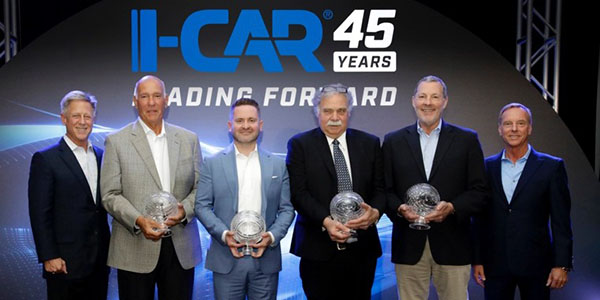The Insurance Institute for Highway Safety (IIHS) has released its yearly ratings for front crash prevention systems, and more than a dozen new models have earned its highest rating of superior.
The Institute rates vehicles as basic, advanced or superior for front crash prevention depending on whether they offer autobrake and, if so, how effective it is in tests at 12 and 25 mph.
“Most motorists won’t be riding in driverless cars anytime soon,” says David Zuby, the Institute’s executive vice president and chief research officer. “In the shorter term, automatic braking is an accessible technology that’s within reach for many drivers. We’ve seen an uptick in the number of luxury and mainstream models with available autobrake. That’s a welcome sign for highway safety and helps pave the way for the eventual deployment of fully autonomous vehicles.”
Fourteen new models earned a superior rating and five earned an advanced rating. Earning superior were the 2016 Acura ILX, MDX, RDX and RLX; 2016 BMW X3; 2015 Chrysler 300 and its twin, the 2015 Dodge Charger; 2015 Mercedes-Benz C-Class (both Collision Prevention Assist Plus and Pre-Safe Brake equipped versions), CLA (both Collision Prevention Assist Plus and Distronic Plus equipped versions) and E-Class; and the 2016 Mazda 6 and CX-5. The 2016 Volkswagen Golf, Golf SportWagen, Jetta and 2015 Volkswagen Touareg were rated advanced for front crash prevention. The X3 earned an advanced rating when equipped with BMW’s camera-only system called City Braking Function and is rated superior when equipped with a camera- and radar-based system.
Forward collision warning systems that meet performance criteria set by the National Highway Traffic Safety Administration and autobrake systems that provide only minimal speed reduction in IIHS tests earn a basic rating.
Vehicles that combine the warning with moderate speed reductions earn an advanced rating. It also is possible to qualify for an advanced rating with an autobrake system that doesn’t first warn the driver before taking action. Models that provide major speed reductions in IIHS tests earn a superior rating.
Mercedes-Benz is first to offer a standard front crash prevention system that earns a superior rating in IIHS test track evaluations. Mercedes’ Collision Prevention Assist Plus system is standard on the 2015 C-Class, CLA and E-Class. Most front crash prevention systems must be purchased as part of an optional package.
Since the Institute launched its front crash prevention ratings program in 2013, some manufacturers have upgraded autobrake capabilities to earn higher ratings. Mazda is one example. The 2014-15 Mazda 6 is rated advanced, while the 2016 midsize car earns a superior rating. Another is BMW. The 2013-14 X3 midsize luxury SUVs were rated basic. Now the 2016 model earns either an advanced or superior rating, depending on system options. Likewise, the 2015 Volkswagen Golf, Golf SportWagen and Jetta were rated basic for front crash prevention, while the 2016 models are rated advanced.
Although luxury vehicles are more likely to have optional front crash prevention systems, the technology is catching on with more mainstream nameplates. Seven of the 19 superior- or advanced-rated models in this new round are moderately priced: Chrysler 300; Dodge Charger; Mazda 6 and CX-5; and Volkswagen Golf, Golf SportWagen and Jetta.
Forward collision warning is available on half of the 784 2015 models in HLDI’s vehicle features database. Twenty-seven percent of 2015 models offer a front crash prevention system with autobrake, more than twice as many as in the 2012 model year.
The Institute requires an advanced or better rating for front crash prevention as one of the criteria needed for a 2015 TOP SAFETY PICK+ award.
Click here to read the full story.













